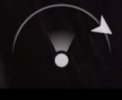Well after purchasing my
MA2 longer ago than I want to divulge for many reasons such as too windy, too busy and nervous I did my maiden flight this morning in the middle of a large playing field nearby in the Blue Mountains. I checked the map in cache and verified that the 'home' location was where I was located and then flew for about 20 minutes.
I was gobbed smacked. Loved the way that the FLY app talked to me rather than having to peer at the display in bright sunlight.
Loved the way it beeped at me when it got close to me and I assume that may have been obstacle avoidance? Is that correct?
The only annoyances I had was using (auto) takeoff as I have watched many videos and read lots of things which simply stated 'tap the take off button and then tap and hold'. I cannot remember ever seeing that the tap and hold was in the middle of the screen and not the same icon which I initially tapped. As the screen was difficult to see in the bright sunlight it didn't 'stand out' and after tapping and holding the take off icon 2 or 3 times I looked closely at the screen and saw the somewhat large display in the middle where the tap and hold needs to be done. Please note that due to the bright sunshine I had to look at the display from very close to it. I am not young and have a cataract in one eye.
Also when I tested the return home it did come back to close to where it took off (I used a large round landing mat on the grassed surface) it landed about 500mm from the edge which could have resulted in the props touching the grass if it hadn't been recently cut. Did I do anything wrong or what is the correct procedure to lock in the start location or is this normal?











